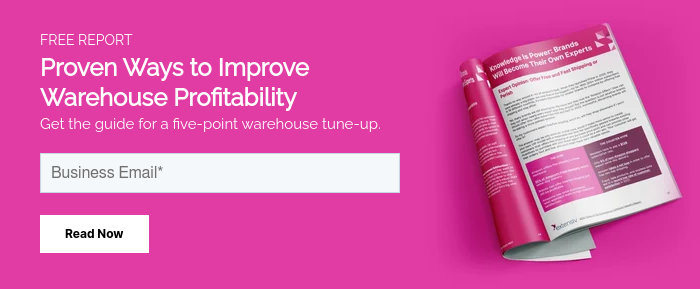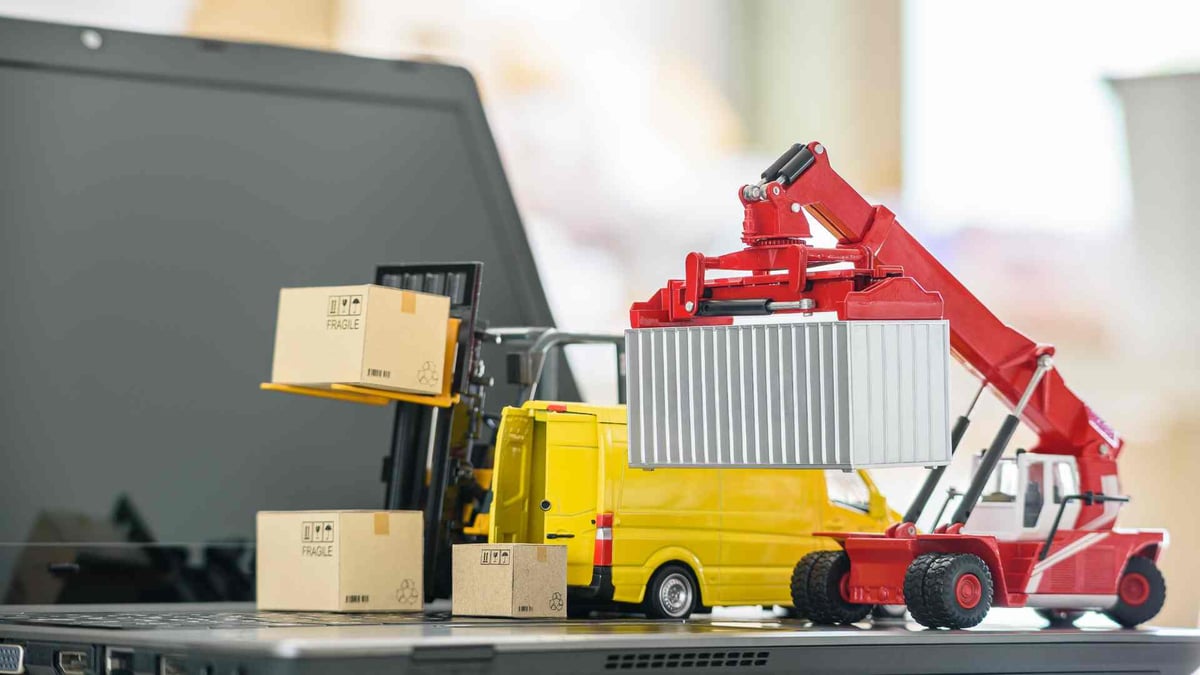How 3PL Warehouses Can Prepare for Port Congestion and Supply Chain Delays
I live in Southern California, home to the largest ports on the west coast: the Port of Los Angeles and in Long Beach. When we have great weather and visibility, you can often see the ports and admire ocean freight and the supply chain at its finest. Normally, you can see four or five container vessels waiting to enter the port, but this past weekend freight vessels stretched as far as the eye could see waiting to claim a berth.
Mastercard reports January ecommerce spending grew 62.1% year over year, showing that ecommerce growth has no intention of slowing down in 2021. That demand naturally puts pressure on the entire supply chain and creates a domino effect of demand starting with raw materials to manufacturing to imports to shipping container availability to port availability, not to mention trucking and transportation once goods arrive in the US.
While not unexpected, this demand has stretched the supply chain thin and has created massive backlogs in ports, exacerbated by limited air freight capacity. The National Retail Federation expects this massive influx of imports to continue to set record highs through the first half of 2021 based on consumer demand. These delays have started to impact retailers’ operations causing delays of new product releases and sometimes lack of availability of high-demand products.
What does this mean for third-party logistics (3PL) warehouses though? From delivery delays and fluctuations, higher inventory on hand, and more data needed for sellers, 3PL warehouses should expect greater pressure from and coordination with their customers to address any concerns around inventory and upstream supply chain delays.
More Surprises on 3PL Receiving Docks
With shipping container shortages and unpredictable dwell times in ports, predictability of inventory delivery dates to 3PL warehouses may vary in the coming months. One day a warehouse might not have any deliveries and then become overwhelmed with deliveries the following day. Warehouses need efficient and effective receiving processes to address these volume fluctuations.
Best Practice: Make sure you have a plan for handling inventory receiving spikes, potentially through automated dock scheduling, to avoid the risk of not having the necessary labor available to receive and put away inventory.
Maintaining More Inventory on Hand
Historically, retailers would rely on a lean supply chain or just-in-time (JIT) principles optimizing inventory turns and average days of inventory on hand for both cost and efficiency. As supply chains have become less predictable, retailers have had to consider alternate strategies.
With some retailers ordering product sometimes two to three quarters in advance in an effort to ensure supply and adding suppliers for high-demand products, some sellers may expect their 3PL warehouse to carry more inventory to avoid potential stockout situations.
As reported in the Third-Party Logistics Warehouse Benchmark Report, 50% of warehouses report already operating at capacity, so the increased demand for inventory storage space may directly impact a 3PL’s ability to onboard additional customers. Some 3PLs have sought to build relationships with other warehouses to accommodate overflow storage to address this concern.
Best Practice: Ensure you have recurring storage fees set up properly for billing, so when large amounts of inventory get delivered you don’t miss revenue opportunities.
Know Your Warehouse Inventory Data
Things change rapidly with consumer demand, order volume, and inventory availability. Having less predictability in the supply chain makes managing the inventory you house today even more important. Understanding stock status and back orders in real time will prove critical to offering the best service to your customers.
Not only will your 3PL warehouse need to track and manage this data, but your customers will expect transparency as well. Warehousing distribution will need to keep a close eye on daily inventory levels, communicate frequently, and provide visibility to your customers so they can make better procurement decisions.
Best Practice: Ensure your warehouse management system (WMS) provides real time inventory management and offers your customers visibility into the system. Also, help clients forecast their inventory needs with reporting and min/max inventory levels.
3PL Warehouses at Their Best
Most 3PL warehouses pride themselves on their customer focus and support. With greater uncertainty in the supply chain, 3PLs can shine with their customers by offering flexibility, visibility, and ongoing communication.
To learn more about trends impacting 3PL warehouses in 2021, check out our State of the Third-Party Logistics Companies Report.








